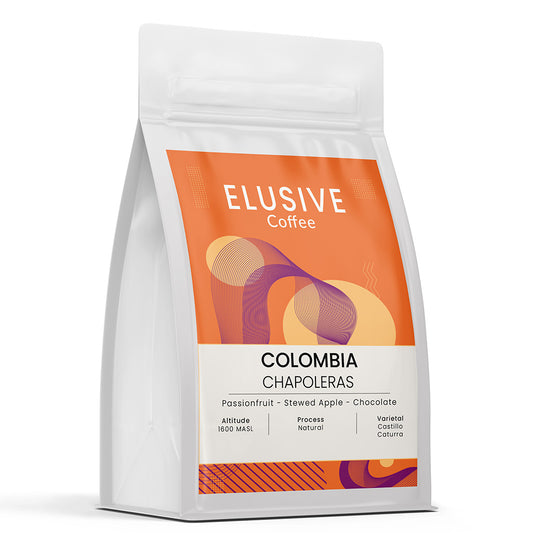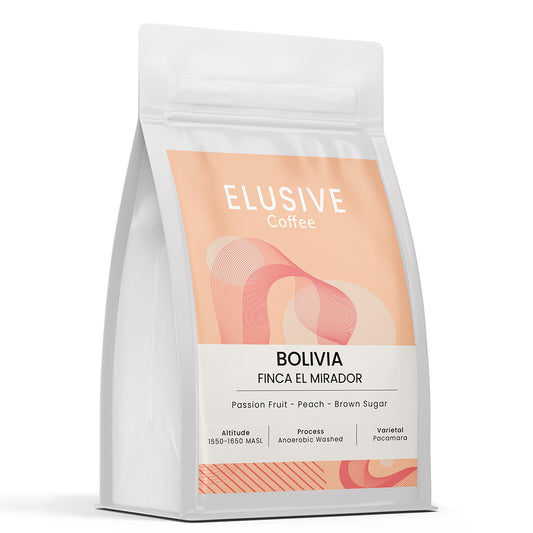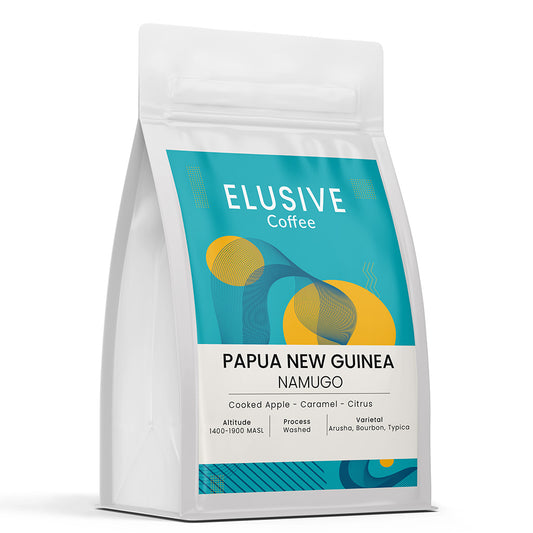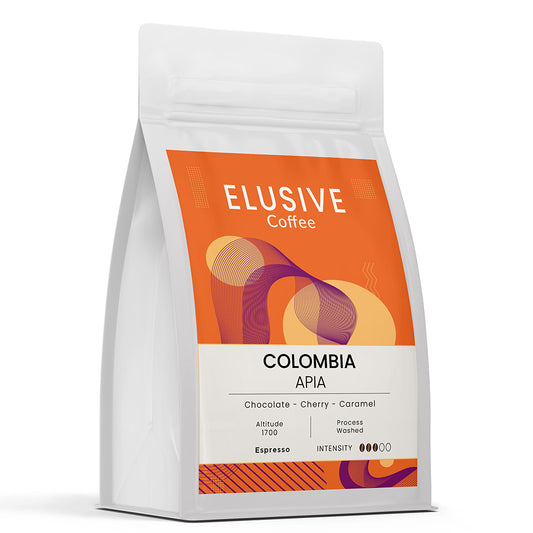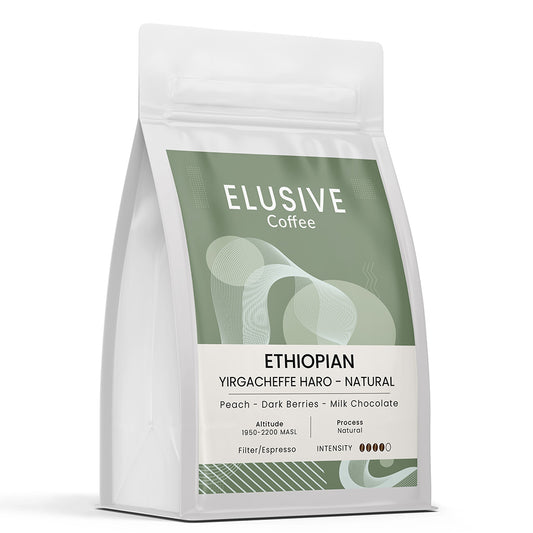
Share
In the vibrant world of specialty coffee, "acidity" is a term often celebrated, yet sometimes misunderstood. It's far more than just a sour taste; it's the lively, sparkling sensation that elevates a good coffee to a truly exceptional one. But where does this prized quality come from? The secret lies not in the roaster or the brewer, but in the green, unroasted coffee bean itself. This post will take you on a journey to explore the foundational factors that create the potential for high-quality, desirable acidity in your cup.
Understanding the Duality of Acidity
Before we dive in, it's crucial to distinguish between two concepts: chemical acidity and sensory acidity. Chemically, coffee is indeed an acidic beverage, typically registering between 4.85 and 5.10 on the pH scale. However, this pH value isn't a reliable indicator of flavor quality.
Our focus is on sensory acidity. This is a desirable flavor attribute, a sensation perceived on the palate as bright, vibrant, crisp, or tangy. Think of the pleasing tartness of a fine wine or a fresh piece of fruit. Descriptors like "bright," "lively," "zingy," "sharp," and "sparkling" are commonly used. A coffee with well-integrated acidity is complex and dynamic; without it, a coffee might be described as "flat" or "dull". The presence of high-quality, well-balanced acidity signals meticulous cultivation, careful harvesting, and precise post-harvest processing.

The Chemical Blueprint: What's Inside the Green Bean?
The sensory experience of bright coffee is the direct result of a complex mix of chemical compounds. These fall into three main categories:
1. The Organic Acid (OA) Profile: The Flavor Drivers
Organic acids are crucial flavor precursors, making up as much as 11% of the green bean's mass.
- Citric Acid: This is perhaps the most common and identifiable organic acid, imparting a distinct tart, zesty, and sometimes sharp sourness reminiscent of lemons, limes, oranges, and grapefruit. It's a hallmark of bright, high-grown Arabica coffees, especially from Kenya, Ethiopia, and Central America. Its concentration is highest in the green bean and decreases during roasting.
- Malic Acid: Contributing a crisp, sharp brightness like green apples, pears, or stone fruits, malic acid often provides a smoother, more rounded flavor than citric acid. It's prominent in many Central American coffees. Like citric acid, it declines during roasting.
- Tartaric Acid: Less common but impactful, tartaric acid contributes pleasant grape-like or winey notes. High concentrations can lead to overt sourness.
-
Other Organic Acids:
- Acetic Acid: The primary component of vinegar, it can add desirable sharpness and a clean finish in low concentrations, but indicates poor processing control if too high. It is created during fermentation and roasting.
- Lactic Acid: Contributes more to mouthfeel and texture, imparting a creamy or rounded sensation, rather than distinct flavor.
2. Chlorogenic Acids (CGAs): The Dominant Precursors
CGAs are the most abundant group of acids in green coffee, making up to 10% of the dry weight. In their raw state, they contribute to the coffee's body and can impart astringency and bitterness. Their primary importance is as flavor precursors: they degrade significantly during roasting into compounds like quinic acid, which is a primary source of harsh bitterness and lingering sourness in dark-roasted or stale coffee. Arabica beans generally have a lower concentration of CGAs than Robusta, contributing to Arabica's more refined flavor.
3. The Inorganic Contributor: Phosphoric Acid
Unlike organic acids, phosphoric acid is inorganic, influenced by soil minerals and fertilization. It's unique because it has little to no flavor on its own, but it modifies the perception of overall acidity, creating a "sparkling," "effervescent," or "vibrant" sensation. It can enhance fruit and sweet notes and is a prized characteristic of high-quality Kenyan coffees, often grown in phosphorus-rich volcanic soils.
The Synergistic Perception of Acidity
Recent research suggests that while we describe "malic acidity" as green apple notes, we're not literally tasting isolated malic acid. Many organic acids in brewed coffee are below the human sensory detection threshold, except for citric acid. Instead, the overall sensation of sourness or brightness correlates with "titratable acidity" (total acid concentration), while the specific "character" (e.g., green apple) comes from the brain integrating this general tangy sensation with volatile aromatic compounds associated with specific fruits. This means that traditional cupping terms are powerful metaphors, highlighting the importance of preserving the full suite of both acid precursors and aroma precursors in the green bean.
The Influence of Terroir: Where the Bean Grows
The unique combination of geography, geology, and climate—known as *terroir*—profoundly shapes the concentration and complexity of acids in coffee.
1. Altitude: The Primary Driver of Complexity
High altitude is the most critical terroir variable for desirable acidity. Coffees grown above 1,200 meters, especially above 1,500 meters, consistently show a higher potential for vibrant, nuanced flavor. This is due to the "slow growth" principle: cooler temperatures, greater diurnal (day-night) temperature swings, and lower oxygen levels at high altitudes slow the cherry's maturation. This extended ripening allows the plant more time to develop and concentrate complex compounds, including organic acids (like citric and malic) and sugars, resulting in harder, denser beans.
Conversely, low-altitude coffees mature quickly, leading to lower perceived acidity, a heavier body, and simpler earthy, nutty, or chocolatey notes.

2. Climate and Soil: The Nurturing Environment
- Climate: Ideal Arabica climates include consistent rainfall (1,500-2,000 mm/year), abundant sunshine moderated by shade (for slower ripening), and a significant diurnal temperature range.
- Soil Composition: Volcanic soils are highly prized due to their richness in minerals like phosphorus and potassium, which directly contribute to vibrant acidity and flavor complexity. Well-draining soils are also essential.
It's vital to remember that terroir is a holistic system. High altitude alone doesn't guarantee quality; it's the synergistic interplay of altitude, climate, and soil that creates exceptional coffee.
A Global Map of Acidity: Regional Profiles
The interplay of terroir creates distinct regional flavor profiles:
-
High-Acidity Regions:
- East Africa (Kenya, Ethiopia): Known for the world's most acidic and complex coffees. Kenyan coffees are famous for intense, savory-sweet acidity (blackcurrant, grapefruit, tomato), often with a "sparkling" sensation from phosphoric acid. Ethiopian coffees offer delicate, floral, tea-like acidity (lemon, bergamot, jasmine).
- Central America (Costa Rica, Guatemala, Panama): Produces clean, crisp, bright acidity, often driven by citric and malic acids (lemon, orange, apple, pear).
-
Medium-Acidity Regions:
- Colombia: Offers well-balanced, medium-to-high brightness with classic red fruit, chocolate, and caramel notes.
-
Low-Acidity Regions:
- Brazil: Archetype of low-acidity, prized for heavy body, smooth mouthfeel, and deep, sweet chocolate and nut flavors.
- Indonesia (Sumatra, Java): Famous for very low to muted acidity, syrupy body, and distinctive earthy, spicy, or woody flavors, partly due to the unique wet-hulling process.
The Genetic Blueprint: Variety Dictates Potential
The coffee plant's genetics establish its inherent capacity for producing acids and precursor compounds.
Species-Level Differences: Arabica vs. Robusta
- Coffea arabica (Arabica): The cornerstone of specialty coffee. Arabica beans have higher concentrations of desirable organic acids (citric, malic), more sucrose (sugar for balance), and lower concentrations of CGAs (bitterness precursors). This leads to its superior, nuanced flavor and wide spectrum of acidity.
- Coffea canephora (Robusta): Contains fewer desirable organic acids and significantly higher CGAs and caffeine. This results in a flavor profile often described as harsh, rubbery, bitter, and generally lacking in complex acidity.
Key Arabica Varietals and Their Acidity
- Typica & Bourbon (Heirlooms): Typica offers clean, mild, sweet, and elegantly balanced acidity with dark stone fruit notes. Bourbon, a mutation of Typica, is known for exceptional complexity and sweetness, with balanced, medium acidity, rich caramel, and red fruit flavors.
- Gesha/Geisha (High-Acidity Champion): Renowned for extraordinary aromatic profiles and uniquely complex acidity, characterized by exceptionally bright, floral (jasmine, bergamot), and citrusy notes with a delicate, tea-like body.
- SL-28 & SL-34 (Kenya's Backbone): These Kenyan varieties produce cups with intense, complex, and exceptionally bright citric acidity, often with a distinct savory or blackcurrant character and the "sparkling" sensation from phosphoric acid.
- Caturra & Catuai (Hybrids): Caturra, a Bourbon mutation, often exhibits bright, more pronounced acidity. Catuai, a hybrid, is known for notably high acidity.
Think of genetics as the "software" and terroir as the "hardware". A high-potential variety ("software") can only realize its full flavor potential when grown in an appropriate environment ("hardware").
The Art of Transformation: Post-Harvest Processing
Once picked, a coffee cherry's acid potential is set. However, processing dramatically shapes the final flavor by modulating the perception of that acidity, altering other flavor components, especially sweetness and body.
1. The Washed (Wet) Process: Highlighting Clarity and Acidity
This method mechanically removes the fruit and mucilage before drying. By stripping away sugary fruit layers, it prevents the bean from absorbing fruit flavors and sugars. The result is a "clean" and transparent cup where the bean's inherent acidity becomes the star. Washed coffees consistently have the highest, brightest, crispest, and most pronounced acidity. This method acts like a "high-pass filter," allowing the "high-frequency" notes of intrinsic acidity to shine through with maximum clarity. It's favored in Kenya, Colombia, and Central America.
2. The Natural (Dry) Process: Cultivating Sweetness and Muting Acidity
In this oldest method, the entire coffee cherry is dried intact, allowing the bean to absorb significant sugars and flavor compounds from the surrounding pulp. Natural processed coffees are known for their heavy body, intense fruit-forward flavors (blueberry, strawberry, tropical fruits), and a noticeably lower or more muted perceived acidity. The powerful sweetness and fruitiness act as a strong counterbalance, making acidity feel more rounded. This acts as a "sweetness amplifier," layering acidity with powerful signals of sweetness and fruitiness. It's traditional in Ethiopia and Brazil.
3. The Honey Process: A Spectrum of Possibilities
A hybrid method, the honey process involves removing the skin but leaving a specific amount of sticky mucilage during drying. The amount left determines the "color" (White, Yellow, Red, Black Honey), creating a spectrum of flavors. It aims to capture the best of both worlds: the sweetness and body of a natural coffee while retaining more of the clean acidity of a washed coffee, offering producers high control over the flavor profile. This process gives the producer a "dial" to control sweetness amplification.
Other Methods
- Wet-Hulled (Giling Basah): Unique to Indonesia, this process results in a very heavy, syrupy body, dramatically reduced acidity, and prominent earthy, spicy, or herbaceous notes.
- Anaerobic Fermentation: An experimental technique involving fermenting cherries in a sealed, oxygen-deprived environment. This can lead to unique and often intense flavor profiles with wine-like, cinnamon, or intensely fruity characteristics and highly complex acidity.
From Potential to Perception: The Roaster's Critical Role
All the factors—terroir, genetics, and processing—create the potential for acidity in the green bean. The final perceived acidity in your brewed cup is ultimately unlocked, shaped, and expressed through the craft of the coffee roaster.
- A light roast profile will preserve more of the original organic acids (like citric and malic) and degrade fewer chlorogenic acids, resulting in a cup that highlights the coffee's inherent brightness and vibrant acidity.
- Conversely, a dark roast profile will progressively degrade delicate organic acids and cause a more significant breakdown of chlorogenic acids into quinic acid (which adds bitterness and sourness), leading to lower perceived acidity, a fuller body, and more prominent roasty or chocolatey flavors.
The green buyer's work in sourcing high-acidity potential coffee and the roaster's skill in developing that potential are inseparable. A roaster cannot create acidity that isn't already present in the green bean, and even the best-sourced high-acidity coffee can have its potential obscured by improper roasting. The journey to a beautifully acidic cup of coffee is a continuous chain of quality, from the soil to the roastery.

Understanding these intricate factors empowers you to appreciate the complexity in your daily brew and choose coffees that match your desired flavor profile. Explore our selection of specialty coffees, where you can often find details on their origin, variety, and processing, helping you discover your next favorite bright and lively cup!






